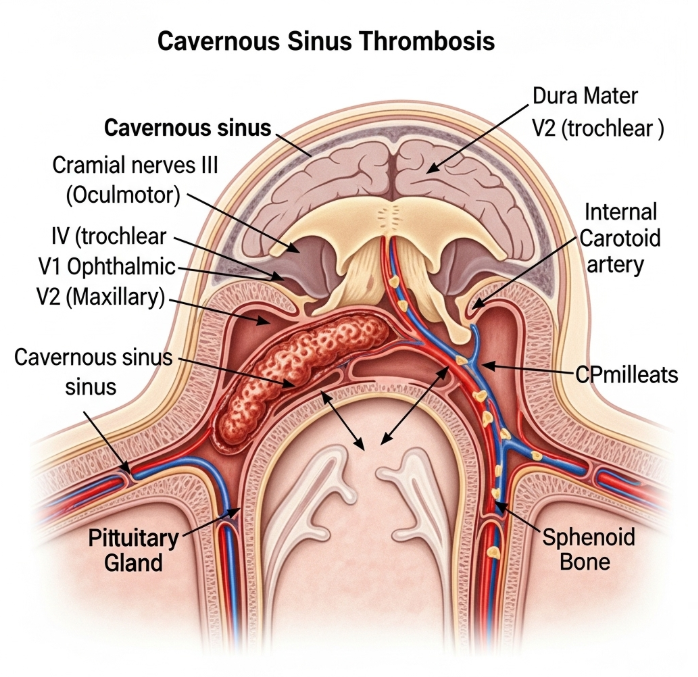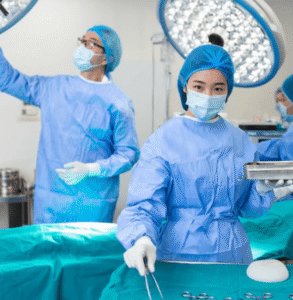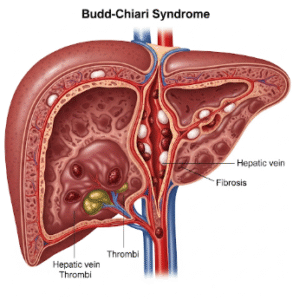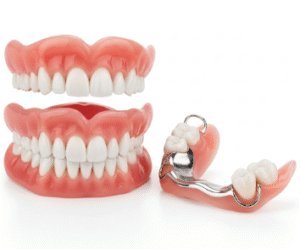Overview
Cavernous sinus thrombosis (CST) is a rare but life-threatening condition caused by the formation of a blood clot in the cavernous sinus, a large vein located at the base of the brain behind the eyes. It is usually a complication of infections in the face, nose, or sinuses that spread to the venous system. In Korea, although uncommon, CST is treated as a medical emergency in tertiary hospitals with advanced neurology, neurosurgery, and infectious disease care.
What is Cavernous Sinus Thrombosis?
CST occurs when a blood clot blocks the cavernous sinus, disrupting venous drainage from the brain and eyes. The condition is often associated with severe infections, such as sinusitis, facial cellulitis, or orbital infections, which allow bacteria to spread through venous channels. The obstruction and infection can cause swelling, increased intracranial pressure, and neurological complications.
Symptoms
- Severe headache
- Swelling and bulging of the eyes (proptosis)
- Pain or paralysis of eye movement (ophthalmoplegia)
- Double vision (diplopia)
- Eyelid swelling and redness
- Fever and chills
- Altered mental status or confusion in severe cases
- Seizures or neurological deficits (if the clot extends further)
Causes
- Infections: Most common cause, especially bacterial sinusitis, orbital cellulitis, or facial skin infections
- Trauma: Facial or cranial injuries
- Surgery: Complications from nasal or facial surgery
- Hypercoagulable states: Conditions that increase the risk of abnormal clotting
Risk Factors
- Chronic sinus infections
- Untreated facial infections (boils, abscesses)
- Diabetes mellitus (due to increased infection risk)
- Immunosuppression (HIV, cancer, steroid use)
- Blood clotting disorders
Complications
- Vision loss (due to optic nerve damage)
- Stroke from clot extension into cerebral veins
- Sepsis and systemic infection
- Meningitis or brain abscess
- Permanent cranial nerve damage (affecting eye movement and facial sensation)
- Death, if untreated
Prevention
- Early treatment of sinus and facial infections
- Prompt medical care for orbital cellulitis or persistent headaches with fever
- Good control of diabetes and other chronic illnesses
- Avoiding self-medication and seeking medical attention for worsening sinus symptoms
Treatment Options in Korea
Cavernous sinus thrombosis requires immediate hospital care, usually in a neurology or neurosurgery intensive care unit. Korean hospitals provide multidisciplinary treatment, including infectious disease specialists, neurosurgeons, and ophthalmologists.
1. Emergency Management
- Intravenous broad-spectrum antibiotics to target bacterial infections (often covering Staphylococcus aureus and Streptococcus species)
- Antifungal medications if fungal infection is suspected (especially in immunocompromised patients)
2. Anticoagulation Therapy
- Heparin or low molecular weight heparin may be used to prevent clot extension, though carefully monitored due to bleeding risks.
3. Surgical Intervention
- Drainage of underlying sinus or facial infections if abscesses are present
- Neurosurgical procedures may be required in severe cases
4. Supportive Care
- Pain management
- Corticosteroids (sometimes used to reduce inflammation around cranial nerves)
- Monitoring for complications like stroke or meningitis
5. Long-term Follow-up
- Neurological rehabilitation if cranial nerve damage persists
- Ophthalmology care for vision problems













